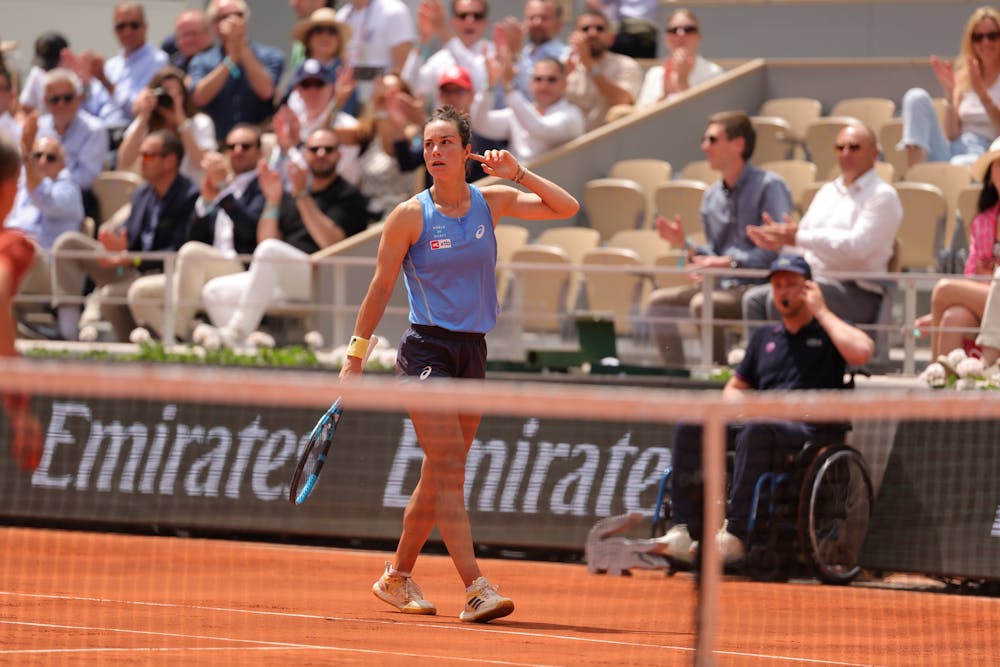The scene on Court Philippe-Chatrier on Monday played out like something out of a movie. Wild card entry Lois Boisson, who this time last year was laid up in a hospital bed recovering from knee surgery, brought 15,000 fans to their feet by stunning No.3 seed Jessica Pegula to keep a memorable Grand Slam debut alive – an almost improbable victory in more ways than one.
What next for Lois Boisson?
French wild card is in new territory but there are a few pointers from recent history
 ©Nicolas Gouhier / FFT
©Nicolas Gouhier / FFTBut now that the credits have rolled on the 22-year-old’s fourth-round triumph, it’s easy to ask: What’s in store for the sequel? A little digging reveals mixed fortunes for previous surprise packages who’ve reached the quarter-finals or better at major tournaments – with one big caveat. All were much more seasoned in top-level tennis than Boisson.
Currently No.361 in the WTA rankings after her injury (she was at a career-best No.152 and rapidly climbing last spring), the 22-year-old is the lowest-ranked quarter-finalist at a Grand Slam event since Kaia Kanepi at the 2017 US Open. But the Estonian peaked at a career-high ranking of No.15 in 2012, and was famously unlucky over her 15-plus seasons on tour.
That year, for example, Kanepi was returning from recurring foot injuries and a health scare from the virus known to cause mononucleosis, and ended up losing to eventual runner-up Madison Keys in the final eight. Three years later in 2020, Bulgaria’s Tsvetana Pironkova, known for her grass-court prowess, also made a push to the final eight at Queens after three seasons on the sidelines and the birth of her first child.
Two other players without a ranking on the WTA computer all went further than Kanepi and Pironkova but they were former world No.1s. In 2009, in the first of two comebacks she made to professional tennis, Belgian Kim Clijsters was unranked when she stormed to her second of three career US Open titles, only her third tournament since giving birth to her first child, Jada, and coming out of retirement. A year later, four-time Roland-Garros champion and Clijsters’ fellow Belgian Justine Henin, who retired from tennis in 2008 but returned 18 months later, reached the final of the Australian Open.
 ©Loïc Wacziak / FFT
©Loïc Wacziak / FFTLois Boisson
All that said, Boisson is in uncharted territory – not just for herself, but one may argue in modern history, too.
Only the second wild card to get this far at Roland-Garros in the Open era, after Hall of Famer Mary Pierce in 2002, the Dijon native is the first player to reach the quarter-finals in her Grand Slam main draw debut since Carla Suarez Navarro here in 2008. She is also the first woman to reach her first career tour-level quarter-final at a Grand Slam event since Emma Raducanu at the US Open four years ago.
“I [would] not believe that if you tell me that two weeks ago," Boisson told reporters after beating Pegula. "I trust in myself, but for sure, if you say that, no, I can't believe. Now it's that, and I'm so happy about it.
“Roland-Garros is a dream and it's a goal, so being in the quarter-finals is already a step ahead,” she said. “Obviously, it's absolutely great for me to have such a run. I couldn't hope for anything better when I came here. … It represents a lot to be in the quarter-finals here, and I hope to go even further."
Raducanu went on to win the title in New York, the first qualifier in the Open era to win a Grand Slam trophy. Who’s to say this Cinderella can’t dream of a similar Hollywood ending?
 ROLAND-GARROS
18 May - 7 June 2026
ROLAND-GARROS
18 May - 7 June 2026

